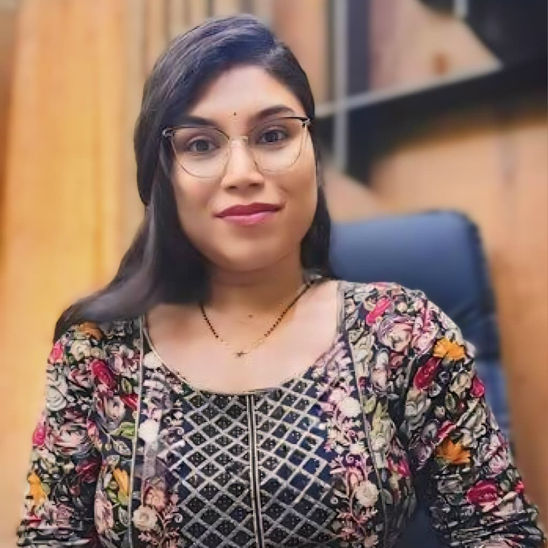Guide to Gamophobia: Fear Of Marriage
What is Gamophobia? Discover the symptoms, causes, and effective treatment options for the intense and irrational fear of commitment, marriage, and long-term relationships.

Written by Dr. Dhankecha Mayank Dineshbhai
Reviewed by Dr. Rohinipriyanka Pondugula MBBS
Last updated on 30th Oct, 2025

Introduction
Feeling uneasy about marriage is common, but when anxiety turns into avoidance, panic, or a pattern of sabotaging serious relationships, it may be more than cold feet. Gamophobia—literally the fear of marriage—is often used to describe intense anxiety about commitment, weddings, or long-term partnerships. While it’s not a formal diagnosis on its own, health professionals typically understand homophobia through the lens of specific phobias and anxiety-related patterns. The good news: effective treatments exist, and many people recover.
In this guide, you’ll learn what gamophobia is (and isn’t), common signs and causes, how it affects relationships, and how clinicians diagnose and treat it. You’ll also get practical strategies to manage marriage anxiety day-to-day, a step-by-step “commitment ladder,” and guidance for partners who want to help without pushing. Whether you’re scared of getting engaged, feel overwhelmed by discussions about the future, or are supporting someone with these fears, this evidence-informed, compassionate guide will walk you through clear next steps to feel calmer, more confident, and more connected.
What Is Gamophobia? Definition, context, and myths
A working definition
Gamophobia refers to an intense, persistent fear of marriage or long-term commitment that triggers significant distress or avoidance. Clinically, this pattern is often conceptualized as a form of specific phobia or as anxiety manifesting in relationships rather than a separate, official diagnosis.
Marriage anxiety can show up around engagement, wedding planning, or even conversations about shared finances, moving in, or starting a family.
Gamophobia vs. everyday “cold feet”
Normal jitters are time-limited and usually resolve with support and information. Gamophobia involves disproportionate fear, physical symptoms (e.g., pounding heart, nausea), and avoidance behaviors that persist and impair functioning.
Common myths
- “It’s just an excuse to stay single.” Reality: It’s a fear-driven pattern that many find distressing and want to change.
- “You can’t love someone and have gamophobia.” Many with fear of commitment deeply value love but are overwhelmed by anxiety signals that mislabel commitment as danger.
- “Marriage fears mean the relationship is wrong.” Not necessarily—anxiety can attach to any valued goal.
Unique insight: Think of homophobia as an overprotective alarm system. Your mind flags marriage as a threat, not because it truly is, but because the brain over-learned danger signals around commitment or loss of autonomy. This reframing reduces shame and opens the door to retraining the alarm.
Signs and Symptoms of Gamophobia
Emotional and cognitive signs
- Persistent worry about getting married, even when there’s no immediate pressure
- Catastrophic thoughts (“If I commit, I’ll be trapped”)
- Mental rehearsal of worst-case scenarios about weddings or long-term relationships
- Intrusive doubts that spike when the relationship deepens
Physical and behavioral signs
- Panic or near-panic during engagement talks, wedding events, or commitment milestones
- Somatic symptoms: rapid heartbeat, sweating, shortness of breath, stomach upset
- Avoidance: canceling dates after future plans arise, refusing to meet family, ending relationships right before key steps
- Safety-seeking: repeatedly checking pros/cons, seeking endless reassurance, delaying decisions
When does it crosses a clinical threshold?
According to specific phobia criteria, fears are excessive, persistent (typically 6+ months), provoke immediate anxiety, and lead to avoidance or significant impairment. While “gamophobia” itself isn’t in the DSM-5, many people who use the term meet criteria for a specific phobia or situational anxiety pattern.
- Unique insight: A telltale sign isn’t the presence of doubt—it’s the pattern. If anxiety reliably spikes as intimacy grows and you feel compelled to flee or pick fights, your nervous system, not your values, may be steering the ship.
Why does it develop? Causes and Risk Factors
Attachment patterns and learning history
Avoidant or anxious attachment styles are associated with commitment difficulties and relationship anxiety. Early experiences (e.g., inconsistent caregiving, conflict-heavy homes, messy divorces) can wire protective strategies that resurface during commitment milestones.
Traumatic or distressing experiences
- Past betrayals, sudden breakups, witnessing harmful relationships, or financial/legal consequences of others’ marriages can condition fear responses around marriage.
- Conditioning principles: If talks about marriage repeatedly preceded distress or loss, your brain pairs “marriage” with “danger.”
Personality and cognitive styles
- High need for control or perfectionism can amplify “fear of making the wrong choice.”
- Intolerance of uncertainty (IU) leads to endless reassurance seeking that never fully satisfies.
Cultural and contextual factors
- Social pressures, expectations about gender roles, and financial stressors can compound anxiety about getting married. Minority stress and family acceptance concerns may intensify fear in LGBTQ+ communities.
Unique insight: Many people try to solve homophobia with more information (e.g., more compatibility quizzes). But if the root is intolerance of uncertainty, more information rarely helps. Skill-building around uncertainty tolerance and values-based choice is often more effective.
Impact on Relationships and Daily Life
Relationship dynamics
- Shortening timelines: relationships end right before “next steps.”
- Push-pull cycles: after intimacy grows, distancing or conflict erupts to release anxiety, then reconciliation follows—until the next milestone.
- Partners may interpret fear as disinterest, creating secondary conflict and loneliness.
Life milestones and functioning
- Delayed cohabitation, engagement, or marriage despite mutual desire
- Avoidance of friends’ weddings, engagement parties, or family gatherings
- Career and financial planning stalled due to the avoidance of shared decisions
Case vignette (composite)
“Asha,” 30, enjoys a two-year relationship. Each time her partner mentions moving in, she experiences chest tightness and insomnia. She starts arguments and feels relief when plans pause. She worries she’s “broken,” but therapy reveals a family history of volatile marriages and a belief that commitment equals loss of autonomy. With exposure-based CBT and a “commitment ladder,” she gradually tolerates cohabitation discussions and signs a lease with confidence.
- Evidence note: Specific phobia and related anxiety patterns are highly treatable; exposure-based approaches often yield strong benefits.
- Unique insight: Anxiety is state-dependent. Build positive exposure when you’re rested and resourced—don’t attempt big steps right after stressful days or major conflicts.
Diagnosis: Is It a Phobia? When to Seek Help?
How do clinicians assess?
- Comprehensive evaluation covers symptom history, triggers (engagement, wedding planning), avoidance patterns, attachment history, and co-occurring conditions (e.g., generalized anxiety or OCD).
- Screening tools for anxiety and phobias may be used; diagnosis often lands under “specific phobia (situational type)” if criteria are met.
When to seek professional help?
If anxiety or avoidance has lasted 6+ months, causes significant distress, or repeatedly disrupts relationships, it’s time to consult a professional. If symptoms persist beyond two weeks at a distressing level or escalate to panic attacks, consult a doctor online with Apollo 24|7 for further evaluation and referral to a mental health specialist.
Rule-outs and medical considerations
Thyroid disorders, stimulant overuse, and sleep deprivation can worsen anxiety. If recommended by your clinician, labs (e.g., thyroid panel) may help rule out contributors—Apollo 24|7 offers a convenient home collection for common tests.
- Unique insight: Labeling your experience can help, but precision matters. Whether it’s “gamophobia,” “relationship anxiety,” or “specific phobia,” the treatment roadmap focuses on retraining fear responses and building tolerance for uncertainty—labels guide, but skills heal.
Treatment Options That Work
Cognitive behavioral therapy (CBT) and exposure therapy
Gold-standard care involves CBT to challenge catastrophic beliefs and exposure therapy to gradually face triggers (talking about timelines, visiting venues, attending friends’ weddings). Exposure, done collaboratively and at a tolerable pace, reduces avoidance and teaches your brain that commitment cues are safe.
- Evidence: For specific phobias, exposure-based treatments are among the most effective psychological treatments, with high response rates.
ACT and mindfulness-based approaches
Acceptance and Commitment Therapy (ACT) builds willingness to feel fear while choosing actions consistent with values (love, loyalty). Mindfulness skills help observe anxious thoughts without obeying them—key to fear of commitment.
Medications
For severe anxiety, clinicians may recommend SSRIs or SNRIs to lower baseline anxiety; beta-blockers can reduce physical symptoms for specific events (e.g., wedding talks). Medication is typically adjunctive to therapy.
Couples therapy and psychoeducation
Involving a partner can improve communication, create a shared plan for exposure steps, and reduce pressure or criticism cycles.
Accessing care
If your condition does not improve after trying these methods, book a physical visit to a doctor with Apollo 24|7 to coordinate mental health care and discuss options.
- Unique insight: Treat the “decision to get help” as your first exposure. If calling a therapist feels overwhelming, start with a 10-minute teleconsult—small steps, big momentum.
Consult a Top Psychologist
Practical Steps: Self-Help and Partner Support
Build your “commitment ladder” (graduated exposure)
List triggers from least to most anxiety-provoking. Example ladder:
1) Read an article about engagement
2) Discuss core values for 10 minutes
3) Attend a friend’s engagement party
4) Spend a weekend together looking at neighborhoods
5) Sketch a 6–12 month vision (not a binding plan)
6) Tour apartments together without signing
7) Set a tentative timeline to revisit decisions
Practice each step until anxiety drops by ~50% before moving up.
Skills that make the ladder work
- Box breathing or 4-7-8 breathing during exposures
- Thought defusion: “I’m having the thought that I’ll be trapped,” rather than “I’ll be trapped.”
- Values cue cards: “I choose closeness and honesty, even when anxious.”
For partners: support without pressure
- Use “supportive curiosity”: “What feels scary about this step?” rather than “Why can’t you commit?”
- Create two-step plans: agree on a small step now and a specific time to revisit the next step.
- Boundaries matter: Partners can be compassionate and clear about their needs and timelines.
Decision frameworks to reduce stuckness
- Values test: If fear disappeared for 24 hours, what would you choose? Act one size down toward that answer.
- Reversible-first principle: Prefer reversible moves (e.g., month-to-month lease) before
- irreversible commitments—this builds confidence without forcing leaps.
Unique insight: Treat reassurance like a spice, not a staple. Frequent reassurance can quietly feed anxiety’s need for certainty. Replace with validation plus collaboration on the next small action.
Homophobia vs. Normal Doubts, Commitment Issues, and Related Conditions
Normal doubts and cold feet
Short-lived, context-specific, and responsive to information and support. Don’t cause chronic avoidance.
Commitment issues without phobia-level anxiety
May reflect preferences, values, or life stage; not necessarily fear-driven. If there’s no significant distress or impairment, therapy may focus on clarity rather than exposure.
Overlaps and differentials
- OCD: intrusive doubts about “the one,” compulsion to seek certainty, can mimic relationship anxiety.
- GAD: pervasive worry across many life domains.
- Philophobia (fear of falling in love) vs. homophobia (fear of marriage/commitment): related but distinct focus.
Unique insight: Ask: “Am I moving away from what I value because of anxiety?” If yes, you’re likely dealing with fear-based avoidance rather than a true preference mismatch.
Special Considerations: Culture, LGBTQ+, and Life Stage
Cultural scripts
In some cultures, marriage is a strong expectation; anxiety may be amplified by family pressure. In others, marriage is optional, but financial or career norms still weigh heavily.
LGBTQ+ contexts
- Minority stress, legal concerns, and family acceptance can increase vigilance around commitment. Tailor the exposure ladder to the realities of your context.
Age and life stage
- Emerging adulthood: identity exploration can heighten uncertainty; skills around values and reversible decisions are crucial.
- Later-life commitment: fear may tie to prior divorce or loss; therapy can address grief and rebuild trust.
Unique insight: Design exposures that reflect your lived reality. For some, a commitment ceremony without legal marriage can be a middle step; for others, a legal partnership with a prenuptial agreement lowers perceived risk.
Conclusion
Marriage is a meaningful choice, and feeling anxious about a big decision is human. Gamophobia becomes a problem when fear—not values—drives your choices, pushing you to avoid, sabotage, or endlessly delay steps you actually want. The core insight is simple but powerful: you don’t have to eliminate fear before moving forward. With the right tools, you can carry fear and still take steps that honor love, commitment, and your long-term goals.
Start by naming the pattern, then build your commitment ladder—small, reversible steps that chip away at avoidance. Use skills like mindful breathing, thought defusion, and value reminders to ride out anxiety spikes without retreating. If you’re a partner, your compassion and steadiness matter: validate the fear, agree on modest next steps, and be clear about your own needs and timelines.
Consult a Top Psychologist
Consult a Top Psychologist

Dr. Jinesh Shah
Psychiatrist
20 Years • MBBS, MRCPsych (UK), CCT in Adult Psychiatry (UK), CCT in Child and Adolescent Psychiatry (UK), PG Diploma in Clinical Psychiatry (UK), Cert Hypnotherapy (UK).
Ahmedabad
Apollo Speciality hospital, Ahmedabad, Ahmedabad
(125+ Patients)

Ms VISHAKHA RATHI
Psychologist
4 Years • MA (Psychology)
Delhi
REBUILDING MINDS (OPC) PRIVATE LIMITED, Delhi

Ms. Moumita Ganguly
Psychologist
13 Years • B.ED(Special) Visual Impairment , PG.Diploma in Rehabilitation psychology
Kolkata
M’s Clinic, Kolkata
(125+ Patients)

Ms Shweta Chhabra
Clinical Psychologist
10 Years • M.PHILL in clinical psychology, B.A in psychology, M.A in psychology,
Bengaluru
Apollo Medical Center, Marathahalli, Bengaluru
(25+ Patients)

Dr. Rituparna Sannamoth
Clinical Psychologist
5 Years • BSC Psychology, MA Psychology, M. Phil Psychology
Barrackpore
RSV Healthcare, Barrackpore
Consult a Top Psychologist

Dr. Jinesh Shah
Psychiatrist
20 Years • MBBS, MRCPsych (UK), CCT in Adult Psychiatry (UK), CCT in Child and Adolescent Psychiatry (UK), PG Diploma in Clinical Psychiatry (UK), Cert Hypnotherapy (UK).
Ahmedabad
Apollo Speciality hospital, Ahmedabad, Ahmedabad
(125+ Patients)

Ms VISHAKHA RATHI
Psychologist
4 Years • MA (Psychology)
Delhi
REBUILDING MINDS (OPC) PRIVATE LIMITED, Delhi

Ms. Moumita Ganguly
Psychologist
13 Years • B.ED(Special) Visual Impairment , PG.Diploma in Rehabilitation psychology
Kolkata
M’s Clinic, Kolkata
(125+ Patients)

Ms Shweta Chhabra
Clinical Psychologist
10 Years • M.PHILL in clinical psychology, B.A in psychology, M.A in psychology,
Bengaluru
Apollo Medical Center, Marathahalli, Bengaluru
(25+ Patients)

Dr. Rituparna Sannamoth
Clinical Psychologist
5 Years • BSC Psychology, MA Psychology, M. Phil Psychology
Barrackpore
RSV Healthcare, Barrackpore
More articles from General Medical Consultation
Frequently Asked Questions
Is agoraphobia a real diagnosis?
Not as a standalone DSM-5 diagnosis. Clinicians often conceptualize it as a specific phobia (situational type) or relationship-focused anxiety. The fear is real and treatable regardless of the label.
How do I know it’s homophobia and not just the wrong relationship?
Look for patterns: Does anxiety spike with commitment milestones across relationships? Are you avoiding steps aligned with your values? Therapy can help clarify and treat fear of commitment in relationships.
What treatments help with the fear of marriage?
CBT with gradual exposure is first-line; ACT and mindfulness are helpful additions. In some cases, SSRIs/SNRIs or beta-blockers are used alongside therapy. If symptoms persist, consult a doctor online with Apollo 24|7 to discuss options.
Can I overcome agoraphobia without therapy?
Some do using structured self-help (commitment ladder, mindfulness, values-based steps). However, therapy accelerates progress and reduces relapse. If progress stalls after a few weeks, consider professional support.
How can I support a partner with anxiety about getting married?
Validate feelings, avoid pressuring, agree on small, reversible steps, and set check-in dates. Suggest a joint consult if needed; couples therapy can help align timelines and reduce conflict.




.webp)